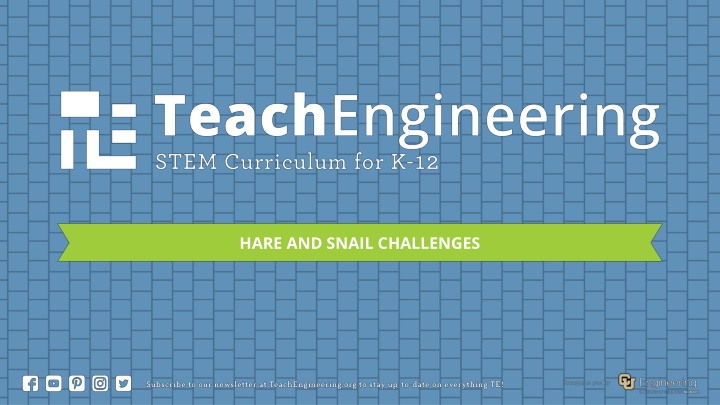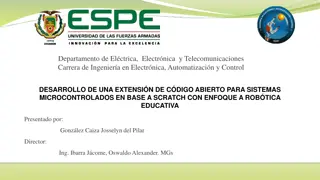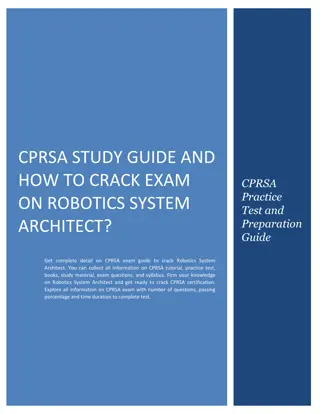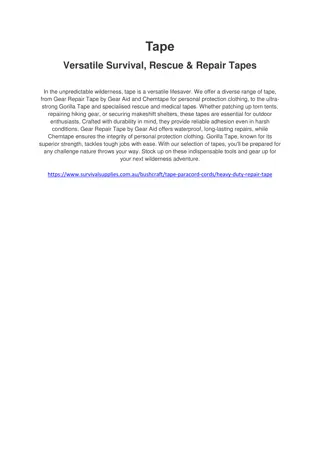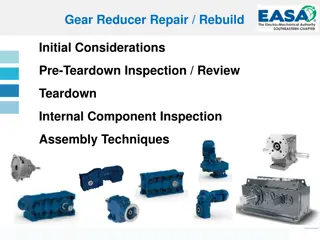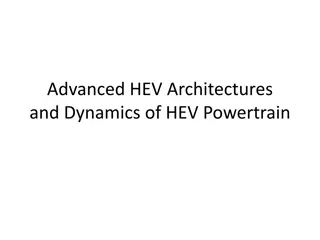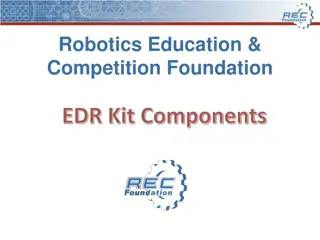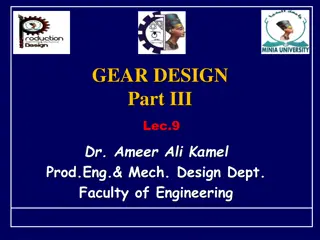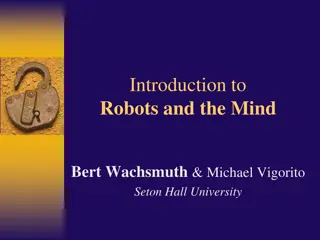Robotics Challenges and Gear Lessons
Engage in exciting challenges like building fast and slow robots, mastering gear ratios, and racing on custom tracks. Learn about gears, gear ratios, and their impact on speed and torque through engaging activities and hands-on projects. Explore the world of robotics and engineering with interactive lessons and practical tasks.
Download Presentation

Please find below an Image/Link to download the presentation.
The content on the website is provided AS IS for your information and personal use only. It may not be sold, licensed, or shared on other websites without obtaining consent from the author.If you encounter any issues during the download, it is possible that the publisher has removed the file from their server.
You are allowed to download the files provided on this website for personal or commercial use, subject to the condition that they are used lawfully. All files are the property of their respective owners.
The content on the website is provided AS IS for your information and personal use only. It may not be sold, licensed, or shared on other websites without obtaining consent from the author.
E N D
Presentation Transcript
PRE-ACTIVITY QUIZ 1. What are some design considerations to make a fast robot? 2. What are some design considerations to make a slow robot?
PRE-ACTIVITY QUIZ ANSWERS 1. What are some design considerations to make a fast robot? Make the robot very light, that is, use a minimal number of parts. Make the wheels turn faster. 2. What are some design considerations to make a slow robot? Make the robot very heavy, that is, use many and heavier parts. Make the wheels turn slower.
CHALLENGES TRACK SPECS Make the track a straight path Make the track 5 to 15 feet in length Make the track about 3 feet wide Clearly identify the start and finish lines start the track finish Use a stopwatch to time the races
DAY 1: HARE CHALLENGE 50 minutes To construct a LEGO MINDSTORMS EV3 robot and program it to travel the given track as fast as possible. THE FASTEST ROBOT WINS! Use the concepts from the gear lesson we just completed: What gear ratio should you use? What happens to torque when you have a high gear ratio? Let s review those concepts once again quickly before you start the challenge.
WHAT IS A GEAR? Lesson Review A gear is a wheel with teeth that meshes with another similar gear that is typically larger or smaller. Gears come in various sizes and types. Depending on the situation, one gear may work better than another. What are gears used for? Changing speed Changing direction of motion Changing torque
MOST COMMONE GEAR: SPUR GEARS Lesson Review Look at the photograph below. The small (input gear) has 8 teeth and the large (output gear) has 40 teeth. Assume that X turns of the small one causes 1 turn of the large one. What is X? In this case, the gear ratio is defined as 1:X (output: input). Notice that this is in the same ratio as the number of teeth, that is, 8:40 or 1:5.
GEAR RATIO: EFFECT ON SPEED & TORQUE Lesson Review Imagine two 40-teeth gear contacting each other. When one 40-tooth gear turns once, how many times will the other 40-tooth gear turn? Now, imaging replacing one of the 40-tooth gears with an 8-tooth gear, with the 40-tooth gear turning the 8-tooth gear. When the 40-tooth gear turns once, how many times will the 8-tooth gear turn? Answer = 1 Answer = 5 In this last case (8-tooth connected to 40-tooth), the 40-tooth gear s axle will have 5 times the torque (rotational force) than the 8-tooth gear s axle. So, although the large gear turns slowly, it can push more!
WHAT IS TORQUE? WHY IS IT IMPORTANT? Lesson Review Think of torque as a rotational force, that is, a force that causes rotation and not forward movement. For the same motor power setting, more torque in a machine (such as a bicycle or car) leads to lower speeds, and less torque leads to higher speeds. This is because power = torque * speed. So, when we increase speed from the input to the output gear, we decrease torque by the same amount! So, in any design you develop, you must decide which is more important: speed or torque, or maybe both... and then select the appropriate gear ratio! Now, begin the hare challenge!
DAY 2: SNAIL CHALLENGE 50 minutes To construct a LEGO MINDSTORMS EV3 robot to travel the same track as slowly as possible. THE SLOWEST ROBOT WINS! Use the concepts from the gear lesson that you just used with the hare challenge. Important factors: Robot weight Motor power setting
POST-ACTIVITY QUIZ 1. What did you find as the most effective design elements to make your robot a) faster and b) slower? 2. What are some problems you faced when you designed a fast robot for the Hare Challenge?
POST-ACTIVITY QUIZ ANSWERS 1. What did you find as the most effective design elements to make your robot a) faster and b) slower? FASTER: increasing gear ratio, increasing motor power, decreasing robot weight SLOWER: decreasing gear ratio, decreasing motor power, increasing robot weight What are some problems you faced when you designed a fast robot for the Hare Challenge? When you make a light robot, it is not structurally stable and can fall apart. You also lose torque, making the robot unstable. a) b) 2.
HARE CHALLENGE SOLUTION In the Hare Challenge, use the minimal number of parts on the LEGO robot, that is, keep the weight low. Then attach the largest gear (40-tooth) to the motor and the smallest gear (8-tooth) to the wheel. It doesn t matter what gears are in between the 40- tooth gear and 8-tooth gears since they act as idler gears. Use the maximum power setting on the motor. If an odd number of gears, have the program tell the robot to go forwards. If an even number of gears, have the program tell the robot to go backwards (in order to make the robot move forwards since even # of gears reverses direction). Expect some trial and error to be necessary.
SNAIL CHALLENGE SOLUTION In the Snail Challenge, make a heavy LEGO robot (use as many parts as possible) since heavy machines move slowly with the same motor. Then attach the smallest gear (8-tooth) to the motor and the largest gear (40-tooth) to the wheel. It doesn t matter what gears are in between the 8- tooth gear and 40-tooth gears since they act as idler gears. Use the minimum power setting on the motor. If an odd number of gears, have the program tell the robot to go forwards. If an even number of gears, have the program tell the robot to go backwards (in order to make the robot move forwards since even # of gears reverses direction) Expect some trial and error to be necessary.
VOCABULARY design: Loosely stated, the art of creating something that does not exist. gear: A rotating machine part with cut teeth that mesh with another toothed part in order to transmit torque; in most cases, the teeth on both gears are identical in shape. torque: The tendency of a force to rotate an object about its axis or pivot.
